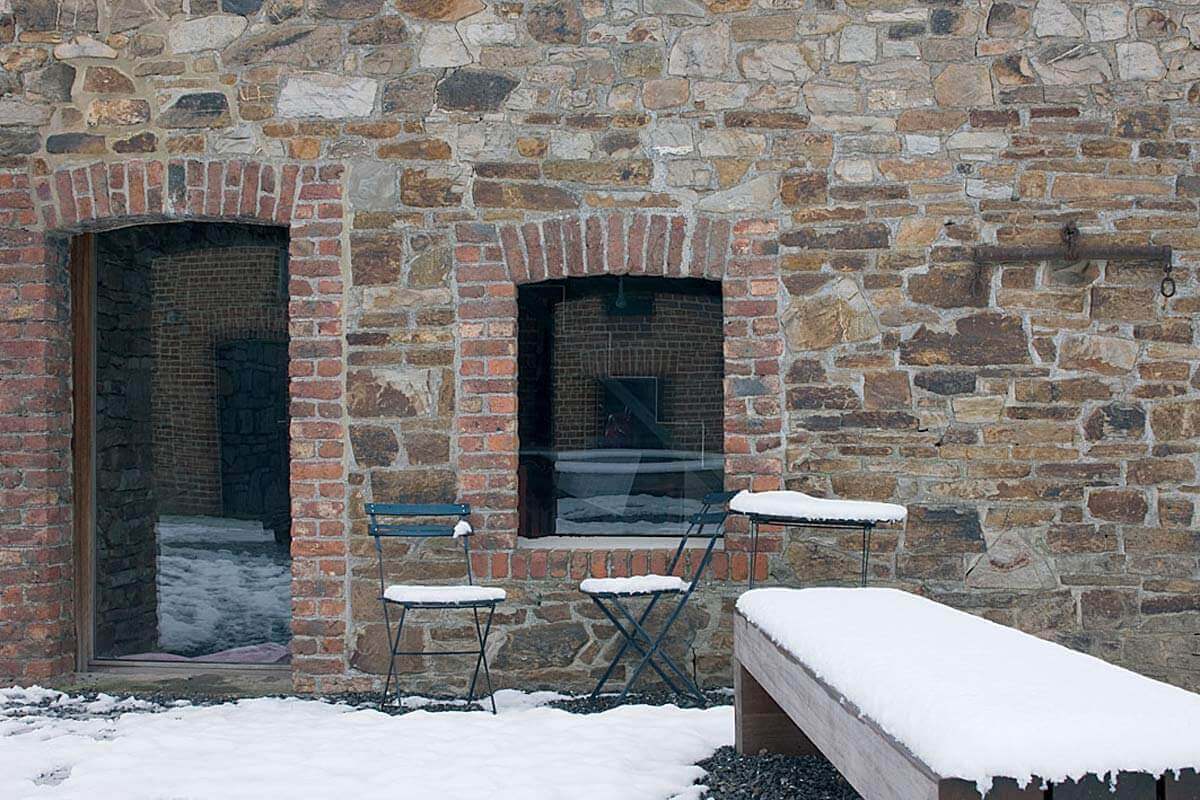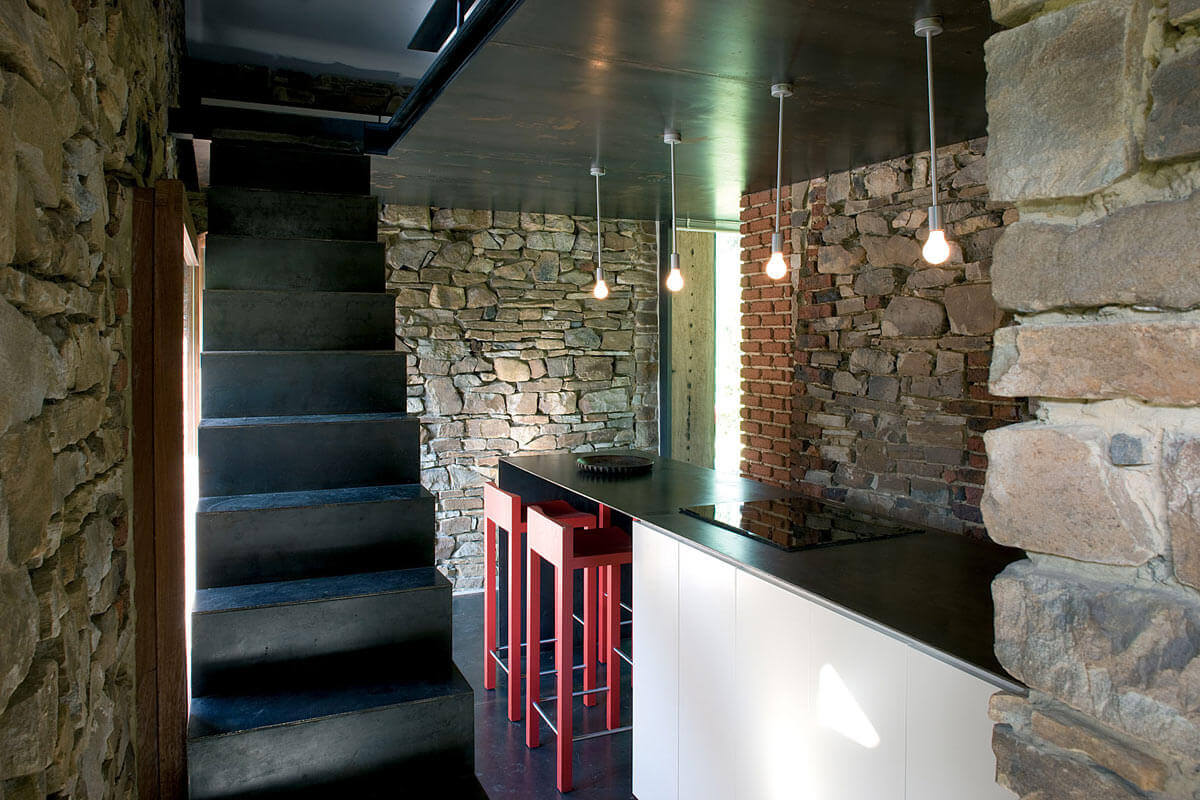Roly
Bruno Erpicum / AABE
I’ve always paid a lot of attention to detail so that I can make the most of techniques available and really bring out proportions. But there’s something else that’s recently begun to influence my approach: after five or ten years, many modern constructions that were initially pristine lose their brilliance. And so I decided to turn more and more to materials that wouldn’t suffer the ravages of time, but would instead take on a patina.
My colleagues and I have turned our Brussels workshop into a type of laboratory, where we work through different solutions, before taking the final ones to building sites in a dozen or so countries throughout the world. Each time, we compare in particular the benefits of different woods, stones as well as bricks or smooth and granular concrete.
In Roly, for example, we kept the existing very old walls made of stone and bricks, the original layout of both materials has been maintained in order to recall the history of the building which has been extended twice.The third extension was to introduce steel sheets into the existing structure to create a mezzanine floor; the aim then was to extend these sheets outdoors in order to create a living room enclosed solely in glass which opens out generously into the natural surrounding environment.
The architect has taken care to blend the new elements into the existing building. The work carried out has not been to the detriment of the old building. The original heavy and solid features of the old building are still clear for all to see, and these features contrast with the extremely soft touch of the more recent work which has been carried out, the intention of which is obvious: the inclusion of features which create a contrast and which are not a close replication of the existing features.
This process gives the impression that the materials are living, stamped with a certain “dirtiness” for the old materials, bricks and stones. No more talk of “ageing” or “deteriorating”, instead “patina” and “authenticity”. Put simply, an ode to time passing...
As you will no doubt have gathered, my architecture practice stems from an unconditional love for the modernist movement. Ultimately, it’s about freeing oneself from all forms of decoration, including the facing of facades and walls – notably cement works –, so that we can continue working unconstrained.
Photographer: Jean-Luc Laloux















